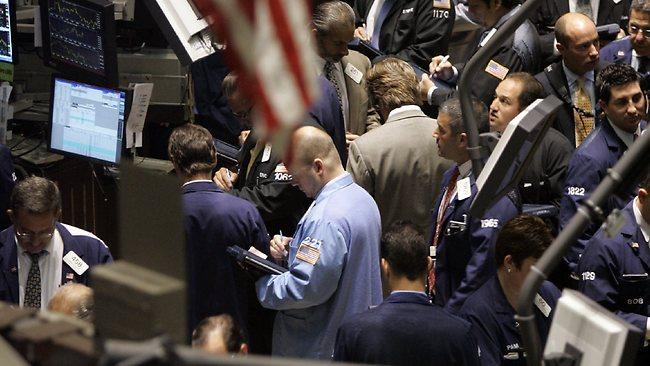
IT is in the nature of events that their consequences seem clearer than their causes. Five years after the collapse of Lehman Brothers, the global financial crisis is no exception. Yet just as the causes of the crisis remain intensely controversial, so uncertainty pervades its long-run effects and the dangers of recurrence.
What is uncontested is that signs of crisis were apparent well before Lehman went into bankruptcy on Monday, September 15, 2008. A year earlier, on August 9 and 10, spreads in financial markets had leapt tenfold, then remained high for month after month. Central banks diagnosed the problem as one of liquidity; in fact, the leap reflected a contagion of fear.
The fear was that banks' balance sheets were a house of cards, exposing each bank to the risk its counterparties would default, toppling one financial institution after the other. As matters turned out, those fears proved well-founded, with an ever broader range of asset values plummeting.
That the house of cards had climbed to precipitous heights reflected a prolonged period of expansive monetary policy. Following the "tech wreck" of March 2000, the US Federal Reserve began cutting the federal funds rate, which fell from more than 6 per cent in mid-2000 to 2 per cent in late 2001, then 1 per cent soon after that. Inflation and unemployment rates would have justified raising rates as early as 2002; instead, it took until 2006 for the Fed to return rates to levels consistent with the 1990s pattern.
A prolonged phase of exceptionally low interest rates unleashed a housing boom, with US housing starts rising from 1.5 million in 2000 to just more than two million in 2006; and while housing prices nearly doubled, attractively priced mortgages sustained strong demand as US government-owned mortgage underwriters (whose aim was to promote home ownership among low-income groups) led the market in a loosening of deposit and minimum repayment requirements.
But easy money was not limited to the US. Concerned about the euro's exchange rate relative to the US dollar, the newly formed European Central Bank followed the Fed in setting interest rates one to two percentage points below the levels consistent with fundamentals. The consequences were especially pronounced in Ireland and the countries of southern Europe, where effective interest rates fell to historic lows, as monetary settings that might have been appropriate for Amsterdam and Berlin were applied to Athens, Dublin, Rome, Lisbon and Madrid.
With those rates feeding into domestic credit expansion, Spain and Ireland experienced unprecedented real estate bubbles, while governments in Italy, Greece and Portugal, where financial markets were less developed, took advantage of the lower rates to borrow on taxpayers' behalf, financing increased spending through public debt.
Globally, the result was a build-up in asset prices that, in turn, was reflected in increases in the face value of the financial instruments through which those assets had been financed. The dangers that asset price inflation created for financial stability were magnified by far-reaching changes in the financial system and especially by the growing importance of "dealer banks".
These banks specialised in creating and managing markets for the increasingly complex securities that channelled the flood of liquidity into economic activity. Their finances rested on the ability to roll over short-term cash loans against the collateral of those complex securities themselves. By 2007, the financing, refinancing and clearing operations of the 10 major US and European dealer banks were at the heart of international financial markets.
These banks were not vulnerable to classic runs on retail deposits but they were extremely exposed to falls in asset prices, as those falls would reduce their ability to post collateral and hence to renew the short-term financing on which they relied. Moreover, should doubts develop about the value of a dealer bank's collateral, the financial institutions with which it dealt would seek to rapidly unwind their exposure, draining it of the very liquidity it needed to survive.
Overheated US housing markets proved the flashpoint that brought the system to its knees. As the Fed, faced with inflationary pressures, returned interest rates to more normal levels, housing prices started to fall, with the rate of decline accelerating in 2007 and 2008. With house prices dropping, delinquency rates rose sharply, creating uncertainty about the value of mortgage-backed securities (whose income stream came from mortgage repayments) and the viability of the dealer banks whose refinancing was most dependent on those securities.
That uncertainty readily turned to panic and, once it did, into a stampede for the exit. When Bear Stearns's solvency and liquidity were threatened in early March 2008, moves by other dealers to curtail their exposures reduced the cash it could access from nearly $20 billion on March 6 to $2bn a week later, forcing the bank's fire sale to JPMorgan. The endgame was even more dramatic at Lehman where, as the crisis came to a head, its major clearing bank demanded an immediate $5bn in additional collateral, pushing it over the brink.
The effects soon spread to Europe. As the bursting of housing bubbles in Ireland and Spain made financial institutions in those countries insolvent, governments recapitalised them, in the process socialising their losses. That converted those losses into cripplingly high levels of public debt, transforming what had begun as a banking crisis into a European sovereign debt crisis.
At the same time, heightened risk awareness focused investors' attention on the fiscal plight of other "Club Med" economies, ending their access to low-cost bond issues and jeopardising their ability to meet their interest obligations by continuously rolling over debt. But default in those countries raised the possibility of their exit from the euro, casting doubt on the future of Europe's monetary system.
A crisis that started in US housing markets thereby spread worldwide. Economic policy was transformed as governments sought to manage the fallout.
Although the initial emphasis was on fiscal stimulus, the most durable changes were actually in monetary policy. Those changes were driven in part by the mechanics of the crisis itself. As central banks sought to stabilise the dealer banks and restore flows within the financial system, they expanded the scope of their market operations. Conventionally, those operations relied on transactions involving government securities; now, however, central banks became "dealers of last resort", acquiring an ever broader portfolio of financial instruments.
This dealer of last resort role became yet more pronounced as various forms of "quantitative easing" were implemented. With cash rates at zero, and faced with what they perceived as an unacceptable threat of deflation (which would have converted very low nominal interest rates into high real rates), conventional monetary instruments were supplemented, if not supplanted, by a plethora of extraordinary measures to provide financial institutions with reserves, guarantees and short-term credits.
Ultimately, these measures had less effect on domestic economic activity than on the financial markets' demand for international assets (such as commodities and emerging market bonds) and for domestic safe havens such as excess reserves and government securities. But they blurred the already fine line between monetary and fiscal policy, as central banks brought an increased range of risks on to their balance sheets. Much of what was being done under the heading of monetary policy was little more than fiscal policy in disguise.
To make matters worse, there was no simple way for central banks to wind down those operations without destabilising the global financial system. There is consequently an obvious possibility that these types of interventions will become entrenched; but even if an exit route can be found, uncertainty about the timing of that exit discourages investment and job creation, prolonging the slowdown the measures were intended to cure.
But that hardly exhausts the monetary dangers that lie ahead. One doesn't need to visit the blog sites of right-wing loonies to know the advanced economies face a looming public debt crisis; the official documents are frightening enough. Even abstracting from the effects of demographic change on public spending, and making reasonably optimistic projections about future growth rates, those economies would need to raise taxes or cut spending by 6 per cent of their income just to bring public debt to 60 per cent of gross domestic product.
And for some critically important countries the fiscal challenge is much greater yet.
The US, which seems set for debt to GDP ratios near 100 per cent, would require a budget turnaround of nearly 7 per cent of GDP simply to stop the current debt to GDP ratio rising.
As for Japan, merely stabilising its debt to GDP ratio would take a fiscal consolidation in the order of 13 percentage points of GDP. While Japan has so far avoided the crunch by relying on high domestic savings, those will diminish rapidly as its population ages. But foreign investors, faced with debt to GDP ratios of more than 200 per cent, would likely demand far higher interest rates than Japanese governments have paid to date, potentially strangling economic growth.
Fiscal consolidation on the scale required seems far beyond the capacity of these countries' political systems. In the long run, however, budget deficits and public debt must be financed by taxation, outright repudiation or inflation. If taxation and outright repudiation are ruled out, concealed repudiation through inflation is the only option. Indeed, in the fiscal theory of the price level, unsustainable fiscal positions induce runs that (like those that bring down banks) are inherently unpredictable in their timing and trigger the inflation investors are trying to escape. That inflation then acts as an inefficient and inequitable form of taxation and cuts the real value of public debt.
Little wonder that, historically, every episode of high and persistent inflation has followed a fiscal crisis. And outbursts of inflation have never been resolved without addressing the fiscal crisis that accompanied them.
It is easy to say that, given stringent inflation targets, central banks would prevent that renewed inflation from occurring. But even if they could, which is highly questionable, they would need the political will to do so. History suggests a degree of pessimism in that respect; so does current experience.
Britain is a case in point. The Bank of England has an inflation target of 2 per cent, but the actual inflation rate has comfortably exceeded that target for the past three years, with the bank's explanations seeming increasingly strained. The reality is that like other central banks, it has traded price-level stability off against other objectives; and with its goals ever less sharply defined, its behaviour, should a fiscal reckoning occur, is difficult to predict.
Five years on, the crisis of 2008 therefore still weighs on the world economy. Unemployment in the advanced economies remains above 8 per cent, with all the costs that imposes; structural fiscal positions have worsened; even exiting current monetary policy settings is replete with threats, much less dealing with the risk of an upsurge in inflation. Undoubtedly, in facing those contingencies, policymakers will prepare to fight the last war. But the primary lesson they should draw from the experience of the 2000s is humility about what economic policy can and cannot achieve.
It was the belief that monetary policy could be finetuned to deal with the consequences of the "tech wreck" that created the conditions for the GFC; it was a mistaken diagnosis of the crisis when it broke that led to responses whose unpredictability made it only more severe; it was the delusion that quantitative easing could be readily wound back that put central banks in their present predicament; and it is the illusion that merely telling central banks to prevent inflation will actually do so that encourages complacency about fiscal imbalances.
In reality, the past decade shows economic policy is far better at creating systemic risk than at controlling it. Good economic performance does not come from sorcerer's apprentices fiddling with the controls; rather, it requires stable, predictable and sustainable policy settings.
Without those settings in place, it is only a matter of time before we see the next Lehman.



